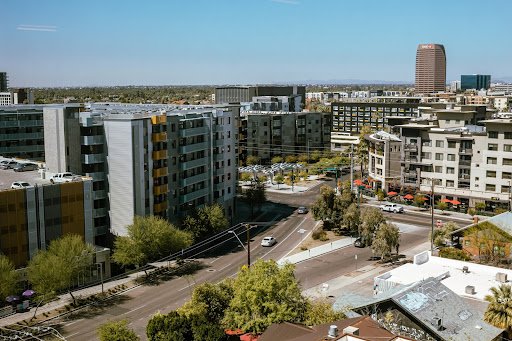In today’s fast-paced world, finding the perfect apartment for rent can be a daunting task. With so many options available, it’s easy to feel overwhelmed and confused. However, with a well-structured plan and some expert guidance, you can streamline the process and secure the ideal apartment that suits your needs and preferences. In this comprehensive guide, we will walk you through the step-by-step process of finding the perfect apartment for rent.
Define Your Budget
Establishing a clear budget is the foundational step in your apartment search. Take a close look at your financial situation, including your monthly income, expenses, and any savings goals you may have. Be realistic about what you can comfortably afford to allocate to rent each month. Experts recommend that your monthly rent should typically not exceed 30% of your monthly income. Having a well-defined budget will help you narrow down your apartment options and ensure you don’t overextend your finances.
Determine Your Must-Have Features
Creating a list of must-have features is essential to finding an apartment that suits your lifestyle and preferences. Start by identifying the non-negotiables. For example, if you have a pet, you’ll want to prioritize pet-friendly apartments. Other factors to consider might include the number of bedrooms, the presence of a washer and dryer, parking availability, or specific amenities like a fitness center, swimming pool, or on-site security. Having a clear list of your priorities will guide your apartment search.
Choose the Right Location
Selecting the right location is a crucial aspect of finding apartments for rent. Think about your daily routine and how a particular location fits into it. Consider the proximity to your workplace, school, or any other regular commitments. Do you prefer a quiet suburban neighborhood, a bustling urban environment, or something in between? Proximity to public transportation, grocery stores, hospitals, and recreational areas can all play a significant role in your choice of location.
Research the Neighborhood
Once you’ve identified potential neighborhoods, delve deeper into your research. Look into the safety of the area by checking crime rates and talking to current residents if possible. Research the local schools if you have children or plan to in the future. Explore nearby parks, restaurants, and cultural attractions to get a feel for the neighborhood’s lifestyle and amenities. Visiting the neighborhood at different times of the day can provide valuable insights into the atmosphere and community.
Consider Commute and Transportation
Your daily commute can significantly impact your quality of life. Calculate the time it takes to commute from the prospective apartment to your workplace or school. Evaluate the available transportation options, whether it’s public transit, biking, or walking. Additionally, consider factors like traffic patterns and potential delays, especially if you need to commute during rush hours.
Inspect the Apartment
When you visit potential apartments, it’s essential to conduct a thorough inspection. Pay attention to the condition of the unit, looking for any signs of damage, wear, or pest infestations. Check that all appliances and fixtures are in working order, and inquire about any needed repairs or renovations. Don’t hesitate to ask the landlord or property manager about maintenance policies and response times to address any concerns you may have.
Understand the Lease Terms
Before signing a lease agreement, take the time to read and understand all the terms and conditions. Pay close attention to the duration of the lease, any provisions regarding rent increases, the security deposit requirements, and rules related to maintenance and repairs. Knowing the lease terms ensures that both you and the landlord are on the same page regarding your rights and responsibilities as a tenant. Month to month lease is ideal for individuals who may not want to commit to a long-term rental agreement. Whether it’s for personal reasons or work-related uncertainties, tenants have the freedom to stay for as little as one month or extend their stay as needed.
Check for Hidden Costs
Beyond the monthly rent, inquire about additional costs associated with the apartment. These may include utilities such as water, electricity, gas, internet, and cable TV. Ask about parking fees, storage costs, or any maintenance fees associated with common areas or amenities. Having a clear understanding of these costs will prevent unexpected financial burdens.
Read Reviews and Ask for References
To gain insights into the quality of the apartment complex or landlord, search online for reviews from current or previous tenants. Reading firsthand experiences can help you identify any potential issues or advantages. Additionally, don’t hesitate to ask the landlord for references from tenants to get a sense of their reputation and responsiveness.
Negotiate the Rent
Negotiating the rent is a common practice in the rental market. If you’ve done your research and found comparable rental prices in the area, you may have room for negotiation. Be prepared to highlight your positive qualities as a tenant, such as a stable income and good rental history. A successful negotiation can result in more favorable rental terms.
Prepare Necessary Documents
Gathering the required documents is crucial to streamline the application process. Common documents include proof of income, such as pay stubs or tax returns, identification (e.g., driver’s license or passport), and rental history or references from previous landlords. Having these documents ready will expedite your application and increase your chances of being approved.
Secure Renter’s Insurance
Renter’s insurance is a wise investment to protect your personal belongings in case of unforeseen events like theft, fire, or natural disasters. You can obtain renter’s insurance through various insurance providers, and it’s relatively affordable. It offers peace of mind knowing that your possessions are safeguarded.
Move-In Checklist
Before moving in, create a comprehensive move-in checklist. This document will help you document the condition of the apartment before you start living there. Note any pre-existing damage, wear and tear, or issues like scuffed floors or chipped paint. Share this checklist with your landlord or property manager to ensure that both parties acknowledge the apartment’s condition to prevent disputes over damages during your tenancy.
Set Up Utilities and Services
Coordinate with utility companies to set up essential services such as water, electricity, gas, internet, and cable or satellite TV. Make sure to plan this well in advance to avoid any disruptions in your daily life. Keep track of the activation dates and contact information for each utility provider for easy reference.
Personalize Your Space
Once you’ve settled into your new apartment, it’s time to make it feel like home. Add personal touches, decorations, and furniture that reflect your style and personality. Create a comfortable and inviting space where you can relax and enjoy your new home.
Finding the perfect apartment requires careful consideration of your individual needs, preferences, and circumstances. Following these steps will help you navigate the apartment-hunting process effectively and increase your chances of finding the ideal place to live.
Also Read Interesting Articles At: Ebeak.


















